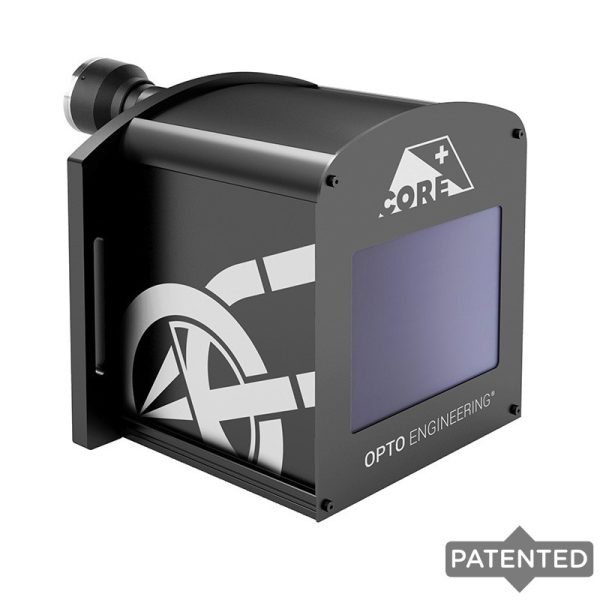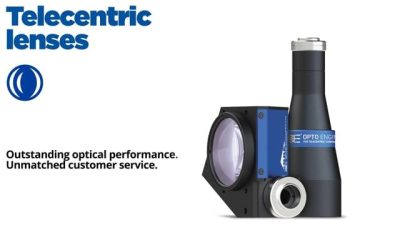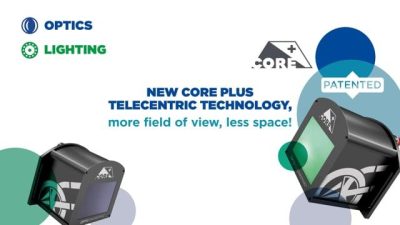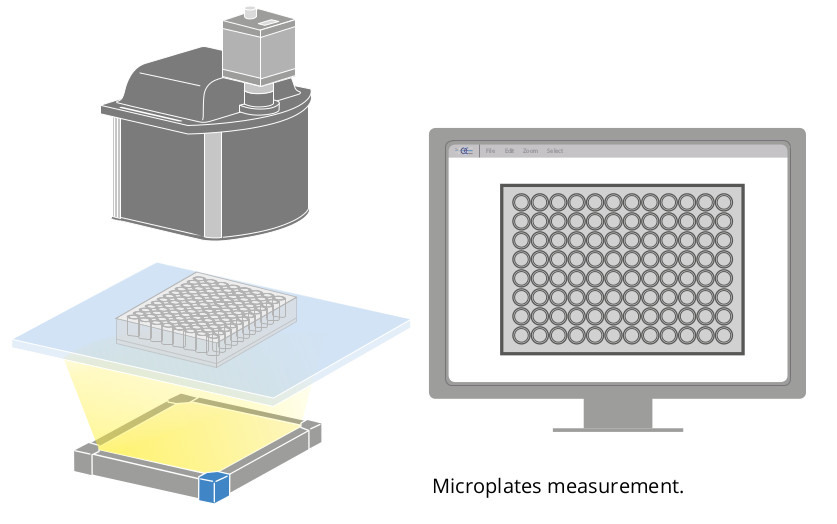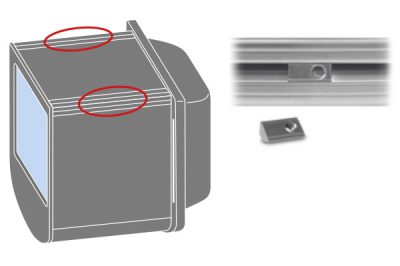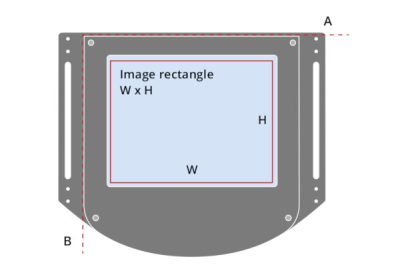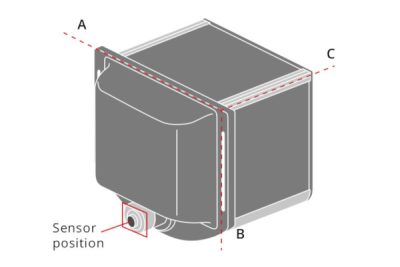TCHR CORE PLUS series
Compact large FOV telecentric lenses for sensors up to 4/3”
Key advantages
- Make your large FOV system up to 45% smaller
TCHR CORE PLUS lenses are up to 45% shorter than other telecentric lenses on the market. The short working distance minimizes the size of the whole system. - Designed for the latest camera sensors
TCCP3MHRxxx-C lenses are designed for sensors up to 1.1” like the IMX304, while TCCP5MHRxxx-F lenses are ideal for sensors up to 4/3” like the IMX387 - Smart integration
TCHR CORE PLUS lenses integrate a mounting flange for easy integration without additional clamps. - System compactness is a competitive advantage
TCHR CORE PLUS lenses minimize the size of your system, resulting in less manufacturing, shipping and storage costs.
TCHR CORE PLUS lenses feature standard extruded aluminum profiles with M5 T-slot nuts for easy mounting. No additional mounting clamps are required, making their integration easy and cost-effective.
TCHR CORE PLUS telecentric lenses take less space in your system, resulting in lower manufacturing, shipping and storage costs. A smaller vision system or measurement machine is the preferred solution in the industry and leads to more sales.
TCHR CORE PLUS are large FOV telecentric lenses for the latest generation sensors up to 1.1” like the IMX304 and 4/3” sensors like the IMX387. They are specifically designed to accurately measure large objects in a reduced space.
Inspired by catadioptric telescopes, their folded optical path allows large FOV imaging while keeping the overall footprint compact. The size reduction is up to 45% compared with other telecentric lenses on the market.
The length and working distance of a telecentric lens strongly impact the size of a vision system. This is especially critical when a large FOV telecentric lens is used with a telecentric illuminator, as the overall dimensions of the system are doubled. For this reason, the working distance of TCHR CORE PLUS series has been reduced to make a measurement system as compact as possible.
Advantages
Save more
• Lower manufacturing cost due to less material employed
• Cost of mounting is reduced as no additional clamps are needed
• Less space required for storage and use
• Lower shipment expenses due to smaller size
• Lower transportation risks
Sell more
• Compactness brings a competitive advantage
Real-world application examples and case histories
Advantages
Save more
• Lower manufacturing cost due to less material employed
• Cost of mounting is reduced as no additional clamps are needed
• Less space required for storage and use
• Lower shipment expenses due to smaller size
• Lower transportation risks
Sell more
• Compactness brings a competitive advantage
Notes
- Given the squared shape of the front window, the lens forms a rectangular image (Tech Info for related drawing).
- Working distance: distance between the front end of the mechanics and the object. Set this distance within ± 5% of the nominal value for maximum resolution and minimum distortion.
- Working f-number (wf/N): the real f-number of a lens in operating conditions.
- Maximum angle between chief rays and optical axis on the object side. Typical (average production) values and maximum (guaranteed) values are listed.
- Percent deviation of the real image compared to an ideal, undistorted image: maximum (guaranteed) values of the uncorrected image are listed.
- Residual distortion after calibration with TCLIB Suite software library, using a PTCP calibrations pattern and a fully GenICam compliant camera. For setup information see related table.
- Object side, calculated with the Rayleigh criterion with λ= 520 nm
- At the borders of the field depth the image can be still used for measurement but, to get a very sharp image, only half of the nominal field depth should be considered. Pixel size used for calculation is 3.45 μm.
- Indicates the availability of an integrated camera phase adjustment feature.
- Maximum dimension of the clamping flange.
- Measured from the front end of the mechanics to the camera flange.
Specifications
Recommended setup
- TC CORE PLUS telecentric lens
- PTCPxxxxx calibration chessboard pattern
- TCLIB Software library & stand-alone tools for the optimization of telecentric setups
- Fully GenICam® compliant camera
| Part number | Calibrations software | Calibrations pattern | Setup camera | Recommended cameras | Recommended sensores |
|---|---|---|---|---|---|
| TCCP3MHR144 | TCLIB Suite | PTCP-S1-HR1-C | RT-mvBF3-2124aG | COE-123-x-z-080-yy-C, RT-mvBF3-2124aG, RT-mvBF3-2124G, RT-mvBC-X1012b, RT-mvBC-XD1012b | IMX253, IMX304 |
| TCCP3MHR192 | TCLIB Suite | PTCP-L1-HR1-C | RT-mvBF3-2124aG | COE-123-x-z-080-yy-C, RT-mvBF3-2124aG, RT-mvBF3-2124G, RT-mvBC-X1012b, RT-mvBC-XD1012b | IMX253, IMX304 |
| TCCP5MHR144 | TCLIB Suite | PTCP-S1-HR1-C | COE29USB3IR-F | COE-290-x-z-110-yy-A, COE29xxx, COE50xxx,COE71xxx | KAI-29050,CMV50000,CHR70M |
| TCCP5MHR192 | TCLIB Suite | PTCP-L1-HR1-C | COE29USB3IR-F | COE-290-x-z-110-yy-A, COE29xxx, COE50xxx,COE71xxx | KAI-29050,CMV50000,CHR70M |

